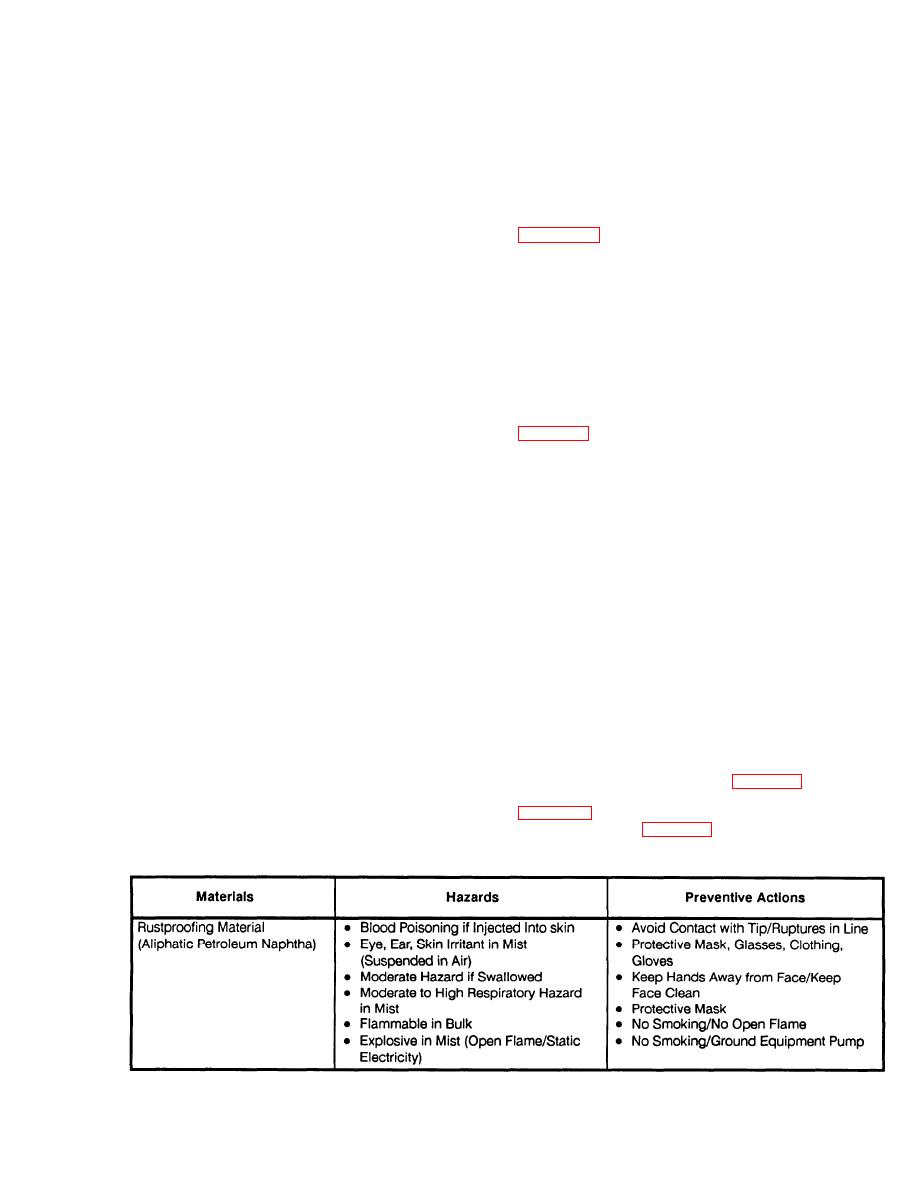
TB 43-0213
(3) Management. To ensure that CPC is
drills, punches,
and other tools may be readily
available.
emphasized during the deployment of hardware, the
Army has undertaken a program to formalize CPC
b. A looped scraper, for use in curved areas or
standards and requirements. All future ordinance
hard-to-reach places, can be fabricated from standard
contracts will be written to include CPC considerations
shop stock. A straight-edge floor scraper to help clean
and will be reinforced by a forthcoming Army
up drippings that have pancaked on the shop floor can
regulation regarding corrosion resistant standards.
also be fabricated from available stock. Refer to
Automotive representatives in the fields of Production
Management, Engineering Item Quality Assurance,
tools .
Procurement, Contracts, and Equipment Specialists are
being called upon to ensure implementation of CPC in
the evaluation, test, and selection of new equipment.
1-12. Material Hazards.
(4) Maintenance. The Army has expanded the
Army Oil Analysis Program (AOAP) to include testing
a. Extreme care must be taken whenever handling,
for the presence of iron oxides in the component oil
mixing, and/or applying corrosion removing com-
samples. Also, a corrosion digest providing "lessons
pounds or rustproofing material. Rustproofers must first
learned" as well as information resulting from Army
become completely familiar with the peculiar properties
research projects is being developed. Finally, units are
and hazards of each compound before mixing and
being encouraged to submit Quality Deficiency Reports
applying the compound to any surface. Refer to
(QDRs) regarding corrosion prevention and control,
and their hazards.
(5) Technology. Army research projects in
corrosion prevention and control include new studies in
b. Rustproofing materials themselves can become
the chemical transformation of rusted metal into a
extremely dangerous if injected into the skin. Such an
solid, alternative material. Development of a durable,
injury can occur if the rustproofer comes into contact
multipurpose and corrosion resistant grease is also
with the nozzle tip during the rustproofing operation.
being reviewed by Army scientists and engineers along
This can also accidentally occur if the rustproofing
with an evaluation of improved diesel fuel stabilizers.
equipment develops any pinhole leak, split, or rupture
Tests are also underway to evaluate the use of
due to wear, damage, or misuse. Never attempt to
composite materials instead of rust-prone metals in
contain leaks with hands. In addition, if fittings
some vehicle design applications. Double galvanized
disconnect during operation, never attempt to couple
body designs are also under evaluation by the Army.
the hosing until after the pump is shut off. Never use a
The actual list of projects and programs underway is far
damaged hose or attempt to mend hosing with tape or
more extensive, but the above does indicate some key
any other device. Repaired hoses cannot contain high
technological directions the Army is taking to combat
pressure fluids and are extremely dangerous. Injection
corrosion and extend the service life of Army
injuries can result in severe infection, blood poisoning,
equipment.
and possibly, gangrene, which could lead to amputa-
tion.
c. In addition to injection injuries, toxic hazards
1-11. Special Tools.
exist from inhalation, ingestion, or skin contact with
a. There are several areas on tactical vehicles and
rustproofing materials. Refer to Table 1-3 for a list of
materials and their associated hazards. Refer to
trailers which cannot be cleaned even with repeated
power washings. Nevertheless, such areas must be clean
material. Refer to Table 1-5 for toxic dosage ratings.
prior to rustproofing. Chisels, putty knives, masonry
Table 1-3. Corrosion Prevention Materials and Their Hazards.
1-5

